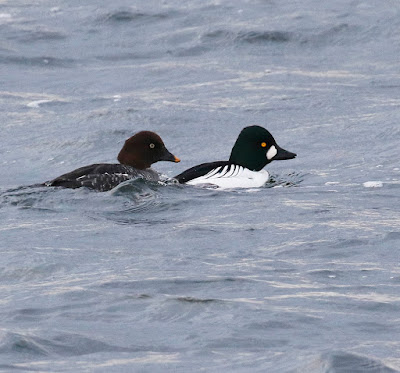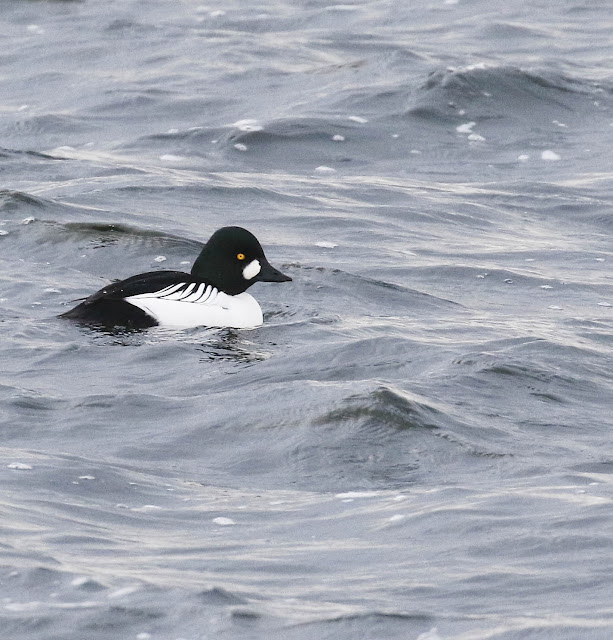It was back to Farmoor Reservoir today. I replaced the natural rugged beauty of mountain and sea that has been my home on Arran for the last two weeks for the prosaic, concrete, man made surrounds of my local Oxfordshire reservoir.
My arrival at the reservoir gates was in a rain squall, which passed quickly, hurried along by a relentlessly strong wind which, despite blowing from the southwest, was cold on my face and I was glad of my padded jacket and gloves.
Not yet prepared to brave the long walk up the central causeway where the wind would be even stronger, colder and directly in my face, I diverted into the cafe and joined a few friends for a coffee and a chat. It was good to see them and our conversation renewed the tenuous bond I hold with the reservoir.
Half an hour passed in the warmth of the cafe but then it was time to venture out and face the elements. There were precious few people out walking on the causeway and few fishermen either, deterred by the strong wind which would play havoc with the casting of their fishing lines for trout.
I had a purpose to my visit and it lay at the far end of the causeway, in the northwest corner of the larger of the two reservoirs, where a triangular area of more sheltered water lay between an artificial water purification barrier and the edges of the reservoir.
 |
| The floating water purification barrier |
At the end of November last year there was another here, staying for less than a week but whether the current grebe is the same or another, is hard to tell but the coincidence is remarkable if it is not. The fact one is here at all is also worthy of comment as Slavonian Grebes in winter are a bird of the coast, spending their time in small groups feeding and resting just offshore where the sea is shallow.
They are tiny compact birds only a fraction larger than the Little Grebe's that also frequent the reservoir in winter. Unlike the plain brown plumage of the Little Grebe the Slavonian Grebe is grey and white with a sooty black cap and if you look closely, a demonic red eye.
The waters of the reservoir were the colour of pewter reflecting the skies above. There was a hint of lighter sky in the southwest, turning the water silver, but it soon faded back to an omnipresent greyness. The grebe was actively feeding, continuously diving, disappearing below the cold waters and alternating its subsequent surfacing by appearing either side of the floating barrier. On surfacing its plumage replicated to perfection the similar coloured water, making it briefly hard to discern.
The Slavonian also showed considerable trust in my human form sat on the wall and on occasions came close as it searched for food. The Little Grebes were more circumspect and kept their distance, showing a communal nervousness if I should move.
 |
| Little Grebe |
Low in the water and wary, with a distinctive high peak to the crown of their heads, they swam out into much rougher, wind tossed water and settled at a distance they considered safe. They were Common Goldeneye, small numbers of which spend the winter here. The group consisted of four females and one resplendent drake, his black and white plumage striking against the steely grey water. They dived in unison to feed and surfaced in sequence, one after the other, maintaining contact at all times on the surface, even though their lightweight bodies were tossed and rolled carelessly by waves running before the wind.
They had a look of mild surprise, affront even, at being disturbed, this suggested by their staring golden eyes. prominent in the dark heads of both male and female, the former's in fact bottle green but looking black at any distance especially in the low light of today, whilst the female is dark chocolate brown.














No comments:
Post a Comment